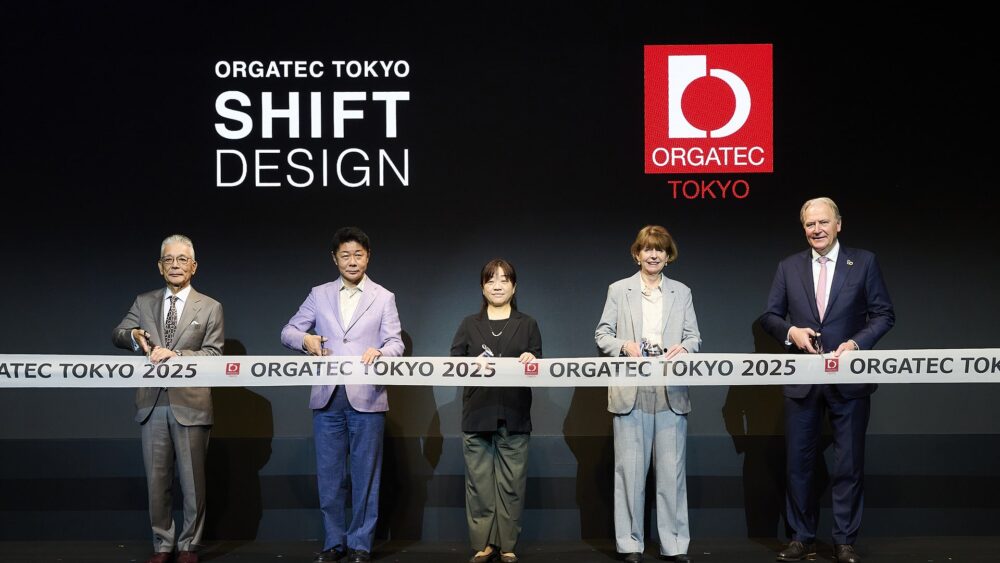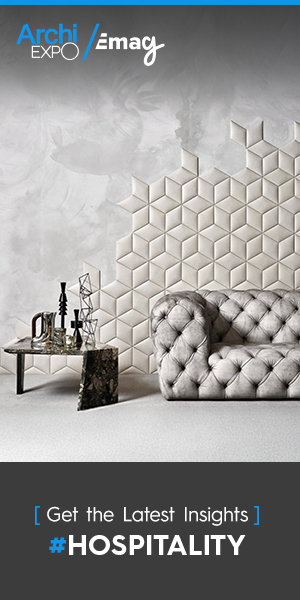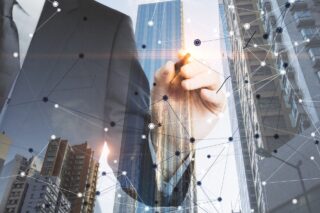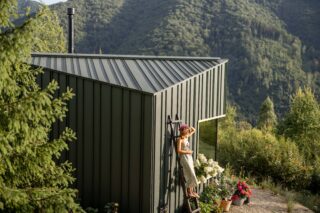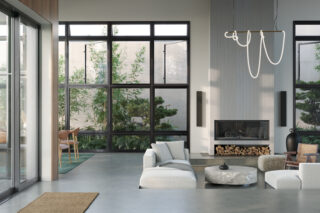Exhibitors and keynote speakers highlight the design shift of the corporate workspace during Orgatec Tokyo through new product displays and discussions. Our freelance journalist gathered a few takeaways from the event. Enjoy!
Japan, June 3-5—During Orgatec Tokyo 2025, the organizers and exhibitors emersed visitors into a major theme of shifting the design of the workplace. New products on display illustrated the trend toward worker comfort, creativity, and individuality as corporations now realize a flexible approach will increase employee satisfaction, thus boosting performance. By considering working style needs, well-being, and comfort, companies can use the design of workspaces for a win-win proposition.
Back in the Saddle Again
Although the saying generally speaks to those returning to the workforce, we spotted a seat designed in the form of an equine saddle meant to improve the health of employees. Expo attendees were eager to try out the new saddle seats made by furniture manufacturer Aico Corporation based in Chita-shi, Aiichi Prefecture, Japan. These seats are ergonomically designed to mimic the posture taken when riding a horse, which has several health benefits for those who must sit working for long hours. These include natural spine alignment to help maintain the upper body’s normal S-curve; reduced back and neck pain; strengthening lower back muscles; and enhanced mobility and reach, which increases comfort and focus.
Moreover, the Aico saddle seat features a 3600 glide rocking design that enabled me to shift and tilt in any direction when I tested out the seat. This could help turn sitting for long periods into a more active experience, compared to sitting in a standard chair with a static, fixed position.
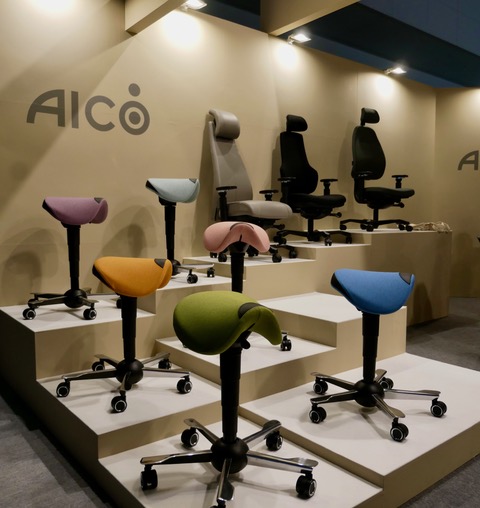
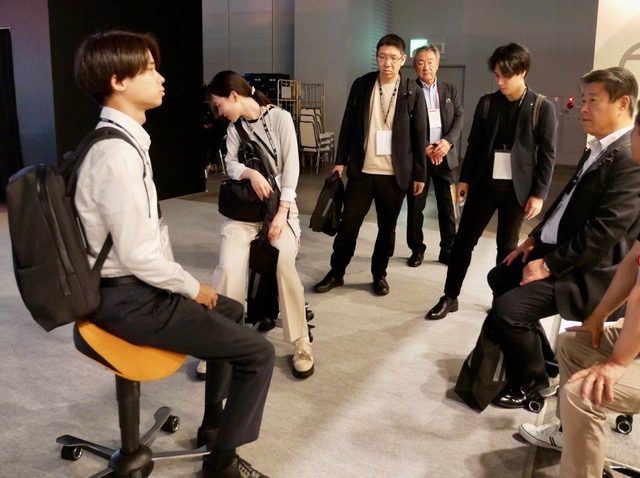

Power Nap & Stretch the Legs!
With all this dynamic sitting going on, some workers will no doubt benefit from a power nap—especially if they are Japanese. According to an OECD 2021 survey, the average sleep time of Japanese people was 7 hours 22 minutes, the shortest among 33 countries.
Kudos, then to Plus Furniture Company, headquartered in Tokyo, for its creation of the Office Nap.
It comprises a high-backed chair and attached head shade that I could lower to cover my face to provide darkness and facial privacy should I need to take a 15-minute power nap to recharge my creativity.
A matching ottoman allowed me to stretch out my legs for added comfort and relaxation.
According to the company, the 110-degree reclining angle of the chair’s back helps prevent the user from completely falling asleep, as it stimulates the sympathetic ganglion nerve in the neck.

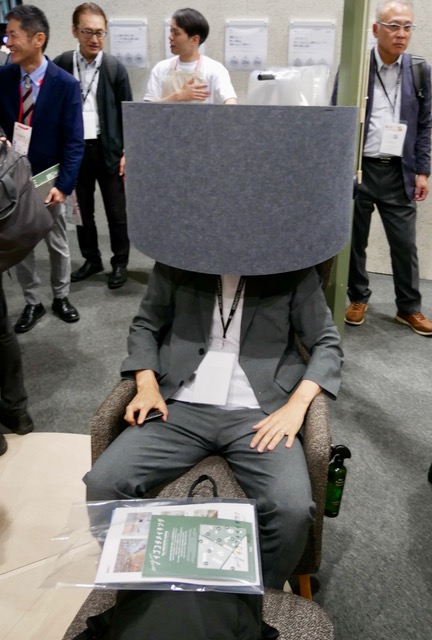
Jungle of Greenery
There is evidence that even artificial plants have a positive effect on the well-being of workers. If that’s the case, Nihon Vidhayakom Company can turn your office into a veritable jungle of greenery with its catalog of potted plants, ferns, grasses, and hanging plants under the brand name Planeco. Some of these were on display at ORGATEC, including new items. The realistic-looking plants are largely made from recycled PET and recycled plastic.
Real plants can improve air quality, remove pollutants, and reduce Co2 levels, as well as reduce stress and elevate a positive mood. But high-quality artificial plants can also appeal aesthetically and so promote good feelings. In addition, they have the benefit of low maintenance, can be placed anywhere, and come without allergies or pests. They can also maintain their appearance for years. A smart strategy would be to use a combination of both natural and artificial plants and thereby get the benefits of both types.
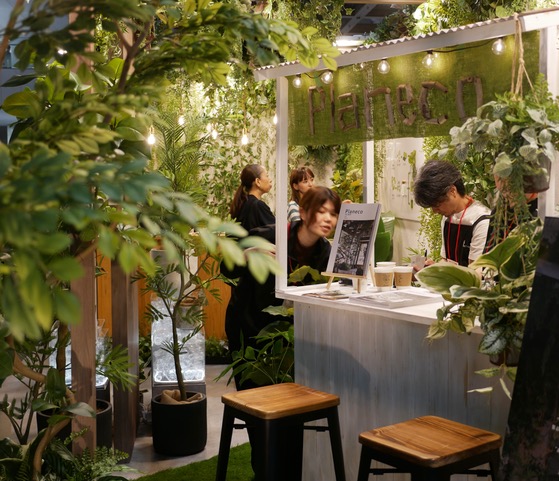
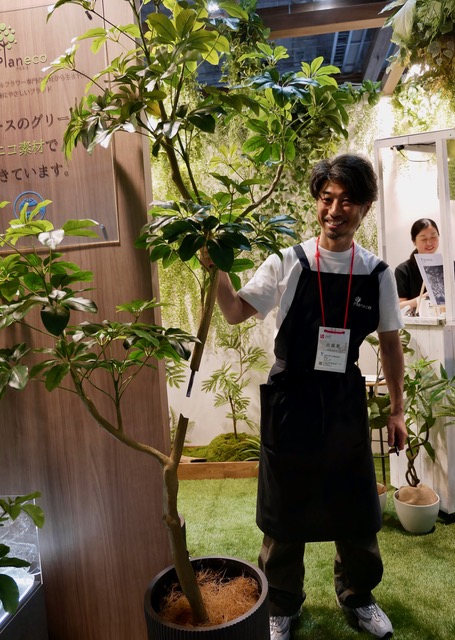
ingCloud Office Chair: 3D Ultra Auto Fit
Judging by the 15-minute wait in line it took to enter Kokuyo’s enclosed exhibition space, this had to be the most must-see event of the show. The reason was a previewing of Kokuyo’s next-generation ingCloud office chair that employs a newly developed 3D Ultra Auto Fit mechanism for the sitter.
The mechanism uses gravity to distribute body pressure and it automatically adjusts to fit several kinds of postures. The overall design, according to the company, provides triple gliding, while the 3D mesh-hammock-backing provides support for the back without a hard frame. Kokuyo says the flexibility of movement provided by the chair improves concentration as well as comfort. I tried it out and was able to comfortably use a PC keyboard even when leaning back. But all this attention to design means the ingCloud comes at a price: with a headrest ¥258,000 (1,570 euros); without a headrest ¥238,000 (146,000 euros).
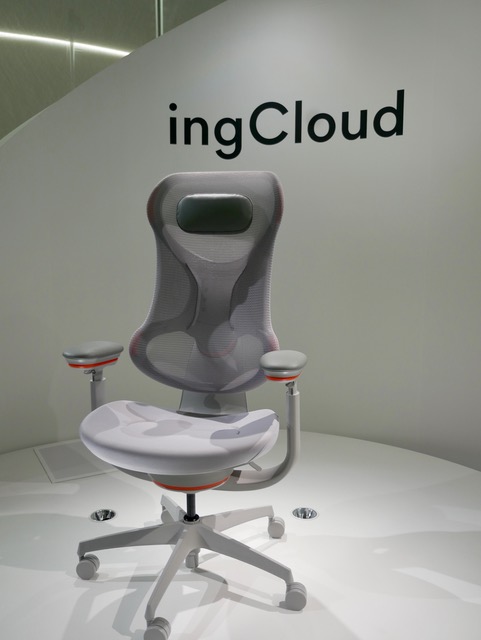
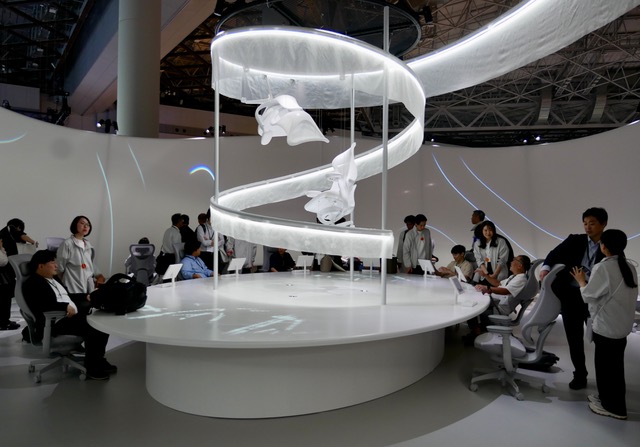

Rules of the Garage: A Look at Apple, Google, and Meta
In a keynote talk titled Rules of the Garage, speaker Claude Dutson, a lecturer at the Royal College of Arts in the United Kingdom, noted how the campuses of Apple, Google, and Meta are considered outstanding 21st-century architectural designs, the purposes of which are to foster creativity and productivity—a theme that coincided with the focus of Orgatec Tokyo 2025. Dutson, a researcher of Silicon Valley architectural history, pointed out that the roots of these campus designs did not arise out of the long-established corporate culture as seen in US East Coast high-rise buildings, but rather have their bases in the garages and university dormitory rooms of their founders, such as Steve Jobs and Mark Zuckerberg.
Dutson noted how Apple, Google, and Meta (formerly Facebook) use architecture to help shape their corporate images and promote collaboration, creativity, and entrepreneurship.
The two outer corridors of the circular, flying saucer-like Apple Park, for instance, are designed to foster serendipitous encounters among employees and so promote collaboration through movement. Dutson contrasted this with the high-rise corporate buildings of older established companies on the East Coast where employees only meet briefly by chance in elevators.
In its campus, Google emphasizes a playful, chaotic openness with loose boundaries between groups to encourage collaboration. Amenities like cafes and gardens are intentionally spread throughout the campus to foster chance meetings.
Meta uses a town square concept for its campus. There are no private officers, and hierarchy is kept to a minimum. Workspaces are intentionally unfinished to maintain a start-up-like atmosphere, while the campus’s overall layout encourages real-time feedback and visibility.
John Boyd is an independent journalist covering science and technology news and events in Japan and Asia. He is available for assignments and can be contacted at boyd@gol.com
